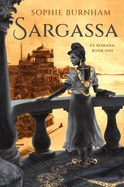
| Publisher: | DAW Books | |
| Genre: | Apocalyptic & Post-Apocalyptic, Fiction, Alternative History, Science Fiction | |
| ISBN: | 9780756419363 | |
| Pub Date: | October 2024 | |
| Price: | $28 |
| Starred | Fiction |
by Sophie Burnham
What if the Roman Empire survived and colonized the Americas? The alternate history underlying Sophie Burnham's Sargassa provides an elevated stage for a riveting, character-driven series opener filled with political intrigue, revolution, and romance.
Burnham brings to life a diverse cast: Selah, a well-meaning but oblivious patrician daughter; Theo, a scrappy nonbinary blade of the revolutionaries; Arran, a soulful outcast son struggling to find his place in a world that rejects him; and Tair, a bright young woman whose potential is squandered in enslavement. When Selah and Arran's father is assassinated, it sets off a cascade of events that will re-form their understanding of the world they live in and threaten its foundations. The four characters converge in a firework display of friendship, conflict, and queer romance.
Burnham's skillful prose depicts visceral character struggles, as when Selah has a moment of self-awareness: "She repeats these things back to herself, forcing herself to believe them, these truths belonging to the arrogant girl she could have been in another life."
Sargassa is a masterclass in world-building, with its realistic politics, complex and brutal caste system, and gorgeous settings. It takes time to get the lay of the land, but the payoff is worth the effort. The expansive scope multiplies the emotional and conceptual weight of the narrative.
Burnham explores hefty questions: Who's culpable for injustice in a broken system? Can humanity ever be trusted with power? And if knowledge is power, what are the implications of sharing or withholding information? Sargassa co-opts familiar tropes to deliver substantive ideas in a compelling debut. --Carol Caley, writer

| Publisher: | HarperVia | |
| Genre: | Women, City Life, American - General, World Literature, Feminist, Humorous, General, Literary, 20th Century - General, Lesbian, Political, Fiction, Historical, LGBTQ+ | |
| ISBN: | 9780063343535 | |
| Pub Date: | October 2024 | |
| Price: | $28.99 |
| Fiction |
by Daniel M. Lavery
In Daniel M. Lavery's Women's Hotel, the Biedermeier, "which even in the grand old Art Deco days had failed to come out on the right side of the glamour line," is as much a character as the women who have made a home in her rooms. There's plain first-floor director Katherine, with her wholly unexpected past, and the beautiful Gia Kassab (third floor) with her "disarming honesty and singleness of purpose." Gia arrives with a fierce determination to marry the much older Douglas Burgess, an editor who once dated her mother. There's Kitty (first floor), who can "make the slightest inconveniences seem like a ruinous series of disasters," and the Society of Friends (11th floor): Carol, Patricia, and Sadie, a trio of artists whose overstuffed suite contrasts with the austere minimalism otherwise embraced.
With characteristic wit and a singular intelligence, Lavery (Something That May Shock and Discredit You) builds a thoroughly impressive first novel out of these women and their stories. On its face, each woman's small, tenuous life may seem insignificant, failing to make any lasting mark on the city she hopes to conquer; however, what Lavery's brilliant (and often very funny) book insists is that each woman's individual experience has value. Similarly, Lavery's cheeky author's note asserts the insignificance of women's hotels, which "sparked no consequent movement and left behind no organized legacy," but the novel itself undermines that insistence, proving the untold worth of these temporary havens, which offered women a blend of privacy and communal living and a refuge from any number of less-preferable situations. Readers will want to move right in. --Sara Beth West, freelance reviewer and librarian
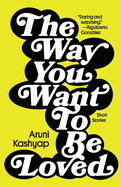
| Publisher: | Gaudy Boy | |
| Genre: | India - 21st Century, World Literature, Short Stories (single author), Fiction, Gay, LGBTQ+ | |
| ISBN: | 9781958652084 | |
| Pub Date: | October 2024 | |
| Price: | $19 |
| Fiction |
by Aruni Kashyap
Aruni Kashyap's The Way You Want to Be Loved is a gorgeously spare exploration of the complexities of identity. Kashyap's prose is restrained, expressive, and unflinching, capable of capturing the delicate nuances of human emotion and the brutality of injustice.
The stories in this collection are united by the experience of marginalization, which is reflected in titles such as "Nafisa Ali's Life, Love, and Friendships Before and After the Muslim Ban" and "The Love Lives of People Who Look Like Kal Penn." Kashyap deftly portrays the everyday violence of othering and the subtle and overt ways in which individuals are made to feel excluded, inferior, or forced to confront the challenges of belonging in a world that often seems hostile to their very existence.
Kashyap's writing exhibits a remarkable sensitivity to human suffering. He is able to convey the quiet distress of his characters with unsparing, pessimistic tenderness, as in these lines from "Bizi Colony": "By the time my parents sent me away from Assam to New Delhi for further studies, Bablu had turned into a crackling fire that refused to be doused, demanding to be fed with wood, oil, fat, tears. Each of us took turns to let it feed upon us."
The Indian diaspora is a central subject in Kashyap's work. His stories often feature characters who have been uprooted from their homeland and must navigate living between cultures, revealing the ways in which displacement can shape a person's sense of self and their relationship to the world. The stories in The Way You Want to Be Loved are emotionally devastating, deeply moving, and thought provoking. --Elizabeth DeNoma, executive editor, DeNoma Literary Services, Seattle, Wash.

| Publisher: | Dial Press | |
| Genre: | World Literature, Magical Realism, Literary, Fiction, Korea | |
| ISBN: | 9780593733936 | |
| Pub Date: | October 2024 | |
| Price: | $22 |
| Fiction |
by Jungeun Yun, trans. by Shanna Tan
Residents of a charming seaside village are stunned by a building that magically "blossomed into existence" in Jungeun Yun's whimsical Marigold Mind Laundry. Translated from the Korean by Shanna Tan, Yun's novel gracefully probes themes of emotional healing and the pursuit of contentment in a tender story that will captivate new and veteran fans of fantastical Korean literature.
Jieun is a beautiful, ethereal woman enveloped in a veil of sadness who travels across centuries, searching in vain for the beloved parents from whom she accidentally separated many lifetimes ago. She is gifted with the power to heal and make wishes come true, but for her own part, Jieun is trapped in an endless cycle of rebirth and despair over her loss.
After entering her latest life in the picturesque seaside village of Marigold, Jieun conjures up a hilltop laundromat, "a space where stains of the heart would be removed," "painful memories" erased, and "the creases in people's feelings" ironed out. Marigold's residents are fascinated by the laundromat's charismatic owner, her delicious healing tea, and the vibrant flowers that swirl around her.
Jieun helps a filmmaker erase distressing childhood trauma and an unhappy celebrity influencer build a new life. In the laundromat sanctuary she creates, friendships bloom, as does romance, and Jieun dares to consider a future and purpose beyond her elusive goal of reuniting with her parents.
Against the Marigold's fiery sunsets, Yun's characters embrace new beginnings and relinquish lost dreams in an uplifting, entertaining story that's sure to invite warm self-reflection. --Shahina Piyarali

| Publisher: | HarperVia | |
| Genre: | Cozy - Holidays & Vacation, Holidays, World Literature, Holiday, Norway, Mystery & Detective, Romance, International Crime & Mystery, Suspense, Fiction | |
| ISBN: | 9780063339293 | |
| Pub Date: | October 2024 | |
| Price: | $17.99 |
| Fiction |
by Kjersti Herland Johnsen, trans. by Olivia Lasky
Kjersti Herland Johnson's gentle romantic mystery Christmas at Glitter Peak Lodge is her first novel published in English and has been adroitly translated from the Norwegian by Olivia Lasky. It's been a year since Ingrid Berg nearly died in an avalanche during a climbing trip. She still has nightmares about it as she slowly recovers in her childhood home, the Glitter Peak Lodge, the hotel she runs with her doughty and somewhat secretive grandmother, Borghild, in the mountains of Norway. But Ingrid's dangerous days are not behind her: someone is threatening the lodge that is her livelihood. Necessary repairs are piling up, and guests keep canceling suddenly with little reason. Add to this the reemergence of two attractive former flames demanding her attention, along with some ancient family drama coming to the surface, and Ingrid is at the limit of her ability to cope.
But she's unlikely to give up, given her motto: "Anyone who climbs mountains needs to be able to forget the fear, forget all the falls and frozen fingers and battles and impassable obstacles--and try again."
This inclusive cozy mystery features immigrant and queer supporting characters, single mothers, and strapping local farmers, and it is longer on character development and romance than it is on actual mystery solving, but all the pieces do ultimately come together in a satisfying and emotionally resonant way. A notable aspect of the novel's charm lies in its cultural specificity, such as loving depictions of holiday meals and details of the traditional regional attire, the bunad. Christmas at Glitter Peak Lodge makes for a delightful literary vacation, particularly during the holiday season. --Elizabeth DeNoma, executive editor, DeNoma Literary Services, Seattle, Wash.

| Publisher: | MCD | |
| Genre: | Horror, General, Literary, Supernatural, Thrillers, Fiction | |
| ISBN: | 9780374607135 | |
| Pub Date: | October 2024 | |
| Price: | $28 |
| Fiction |
by Rivers Solomon
Ezri and their two sisters stay far, far away from the "cursed McMansion" where they grew up as the only Black family in a too-white, too-exclusive suburb. But after receiving disturbing text messages from their mother's phone number, Ezri does the "siblingly" thing and returns to the house, where they find their parents dead in the backyard. The now-empty house is steeped in memories of the "invisible tyrannies" they experienced there: bathwater turning to acid; a dirty clump of hair clogging the drain; taking a nap and waking up inside the oven. "The world unfolds according to a logic most strange when you're a child, and it wouldn't do any good to try to parse it. If a house has claws, a house has claws."
These tyrannies, past and present, stretch across Rivers Solomon's haunting Model Home as the siblings face their worst fears to determine what happened to their parents. Each has their own recollections and understanding of what was--and is--true about the house they grew up in and what might be delusion. Writing from Ezri's point of view, Solomon (An Unkindness of Ghosts) succeeds in setting up a narrative that is as convincing as it is unbelievable, creepily unfolding like a cross between a fever dream and an epic story of gaslighting. Chilling and terrifying, Model Home proves to be a wild, eerie novel of family secrets and abiding love, teetering on the edge of the fantastical but contextualized by the very real horrors of a modern world rife with disturbing dynamics of race, gender, class, and trauma. --Kerry McHugh, freelance writer

| Publisher: | Canary Street Press | |
| Genre: | Holidays, Holiday, Family Life, Romance, Marriage & Divorce, Fiction, Siblings | |
| ISBN: | 9781335006301 | |
| Pub Date: | October 2024 | |
| Price: | $18.99 |
| Romance |
by Susan Mallery
One Big Happy Family is an entertainingly chaotic family Christmas house party--sure to make any reader feel better about their own unruly holiday gatherings. With the Parker family, author Susan Mallery (The Happiness Plan; Sisters by Choice) creates a delightful group of quirky characters.
Fifty-four-year-old Julie Parker, the Parker matriarch and owner of Parker Towing, adores her adult children, Nick and Dana. She's just as glad that they agreed not to have a big celebration this Christmas, however, since she is excited to be spending the holiday with her new beau, Heath, who is 12 years younger than her. But then Nick and Dana decide that they want to get together after all, to honor their father--Julie's ex-husband--who died 11 months ago. Julie doesn't want to cancel on Heath, which means Dana, Nick, and Nick's wife, Blair, are going to meet the boyfriend they don't know about. Thanks to several funny coincidences and unforeseen circumstances, the house party balloons even further to encompass a dozen people, including Blair's crabby mother, Heath's young kids, and more.
Full of love, laughter, and broken limbs, One Big Happy Family is a true-to-life novel of messy family. Nick and Dana have each been keeping things from Julie, just like she has been hiding Heath from them, and the final revelation of all their secrets, amid cookies and mistletoe, sweetens the story. It turns out that, in spite of their squabbles over the Christmas tree and reluctance to share hard truths, the Parkers really are one big happy family. --Jessica Howard, freelance book reviewer and former bookseller
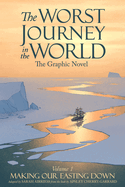
| Publisher: | Iron Circus Comics | |
| Genre: | Biography & Autobiography, Nature, Polar Regions, Library & Information Science, History, Language Arts & Disciplines, Expeditions & Discoveries, Comics & Graphic Novels, Ecosystems & Habitats, Biography & Memoir, Nonfiction, Adventurers & Explorers, General, Maritime History & Piracy | |
| ISBN: | 9781638991373 | |
| Pub Date: | October 2024 | |
| Price: | $20 |
| Starred | Graphic Books |
by Sarah Airriess
The Worst Journey in the World, Volume 1: Making Our Easting Down, animator Sarah Airriess's debut graphic novel, is the thrilling opening to a cinematically vivid adaptation of Apsley Cherry-Garrard's 1922 memoir of a fraught Antarctic voyage.
Cherry-Garrard was an assistant zoologist on Robert Falcon Scott's 1910-13 Terra Nova expedition to the South Pole. In the first six months, the vessel sailed from Cardiff, Wales, to the Southern Ocean via South Africa, Australia, and New Zealand. Even before the ship entered the pack ice near Antarctica, the journey was perilous. Airriess includes multiple climactic storm scenes here, including one in which the engine pumps clog. "For twelve hours we bailed, literally for our lives," Cherry-Garrard recalls.
The book resembles a full-color storyboard for a Disney-style maritime adventure film. Crew members have distinctive, exaggerated features. There is jolly camaraderie as the men sing sea shanties to boost morale. Dolphins leap; seabirds wheel. There's a menagerie on board, too: sled dogs, ponies, and a ship's cat. The familiar and the exotic rub shoulders, as in a memorable scene in which the naturalists croon a carol to lure in curious penguins and then throttle three of them to provide Christmas dinner.
Airriess hews closely to the historical record and includes more than 60 pages of annotations detailing the evidence and artistic decisions underpinning each panel. Scrupulous research meets filmic technique: the book opens with a framing device, set in 1919, in which Cherry-Garrard awakens in his English country house from a nightmare about the "first-rate tragedy" he endured and begins to type this account. The second volume can't arrive soon enough. --Rebecca Foster, freelance reviewer, proofreader and blogger at Bookish Beck

| Publisher: | Leaping Hare Press | |
| Genre: | Wicca (see also Body, Mind & Spirit, Wicca), Occult & Supernatural, Witchcraft (See Also Religion, Historical Fiction, Fairy Tales, Folk Tales, Legends & Mythology, Body, Mind & Spirit, Religion, General, Witchcraft), Comics & Graphic Novels | |
| ISBN: | 9780711295254 | |
| Pub Date: | October 2024 | |
| Price: | $19.99 |
| Graphic Books |
by Lindsay Squire, illust. by Lisa Salsi
Lindsay Squire, known as @thewitchoftheforest on Instagram, introduces the history and practical elements of witchcraft to even the most novice readers via the life story of Bridget Ellen "Biddy" Early, a 19th-century Irish herbalist and folk magic practitioner. Because it is deeply rooted in oral tradition, folk magic runs the risk of being "lost to the mists of time." Squire, who has been practicing witchcraft for more than a decade, writes in the introduction to Witchcraft: A Graphic History that she documented Early's story to keep her life and practice alive. Squire inserts herself into the book as Early's fictitious apprentice, which enables her to serve as a proxy for readers and ask questions of her mentor as she furthers her education in magic. "Magic has existed for even longer than humans have," Early explains to her young student. Sprinkled throughout the book are overviews of the most prevalent types of witches, famous witches across history, everyday tools of the practice, and common spells and their uses, as well as examples of the brutal and sometimes widespread persecution witches have faced.
Lisa Salsi's beautifully detailed illustrations enliven it all, employing an ethereal color palette that somehow evokes spring and fall equally. Salsi's depictions of witches are reminiscent of Alphonse Mucha's Art Nouveau paintings of glamorous women. This succinct initiation to witchcraft will entice readers to explore the lore surrounding one of the world's oldest healing and spiritual practices. Squire has dedicated herself to the aid and education of fledgling witches, and with Witchcraft: A Graphic History, she has created an excellent primer for those looking to dip their toes in. --LeeAnna Callon, manager/bookseller/fishwife at Blue Cypress Books
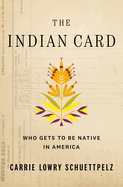
| Publisher: | Flatiron Books | |
| Genre: | Native American Studies, Indigenous, Indigenous Studies, General, History, Social Science | |
| ISBN: | 9781250903167 | |
| Pub Date: | October 2024 | |
| Price: | $29.99 |
| Starred | Social Science |
by Carrie Lowry Schuettpelz
Carrie Lowry Schuettpelz, public policy professor at the University of Iowa, breaks down the nuanced layers of Native American identity in her droll, frank, and funny first book, The Indian Card: Who Gets to Be Native in America, which blends history, social science, and memoir.
More than twice as many people taking the 2020 U.S. Census checked what Schuettpelz calls the "Indian box" to self-report as "American Indian and Alaska Native" as did in 2000. Moreover, the number of people who claimed Native identity far outstripped the actual number of enrolled tribal members in the U.S. Schuettpelz, an enrolled member of the Lumbee Tribe of North Carolina who grew up far away from the Lumbee community, is no stranger to the complexity and contradictions of claiming a Native identity. She set out to explain the census data trend through discussions with tribal members, research via the National Archives and Records Administration, and that "bright beacon in an otherwise dark and stormy sky. I am, of course, talking about Microsoft Excel." Her resulting insight is fascinating, but nothing compares to the intimate stories she shares of people whose lives, families, and identities have been shaped by U.S. and tribal policies regarding who may be legally considered Native American.
Schuettpelz's deep, thought-provoking examination of this often misunderstood topic is illuminating and raw as she combines history with data and personal narrative. In prose infused with humor and vulnerability, she walks readers through tangles both personal and political and shows the human cost of weaponized policy, the questions and loss left in the wake of a decadeslong genocide, and the joy still to be found in the communities that have survived. --Jaclyn Fulwood, blogger at Infinite Reads
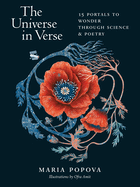
| Publisher: | Storey Publishing | |
| Genre: | Nature, Science, Poetry, Subjects & Themes, Essays, Animals & Nature | |
| ISBN: | 9781635868838 | |
| Pub Date: | October 2024 | |
| Price: | $22 |
| Starred | Science |
by Maria Popova, illust. by Ofra Amit
In her slim, luminous third book, The Universe in Verse, essayist and philosopher Maria Popova (Figuring) pairs 15 essays that explore scientists and their signature ideas with corresponding poems on similar subjects. Interspersed with Ofra Amit's whimsical illustrations, the collection--a tribute to the eponymous annual event Popova hosts--seeks to capture the wonders inherent in both science and poetry, which Popova sees as valuable "instruments for knowing the world more intimately and loving it more deeply."
Popova's book covers a broad range of scientific discoveries, including Euclid's foundational geometric principles and the Hubble Space Telescope's groundbreaking photographs of galaxies and nebulae. Each essay provides a brief factual overview of its subject, but Popova goes beyond mere instruction to celebrate the awe (and sometimes bewilderment) to be found in the deep study of scientific material. Some poems highlight the work of individual scientists, such as Marie Curie in Adrienne Rich's "Power" and Stephen Hawking in Marie Howe's "Singularity." More often, however, they turn a keenly observant eye onto some aspect of the natural world: the complexities of mushrooms, the consciousness of the octopus, the deep resilience of trees. The essays and poetry reflect and refract one another to create a dialogue--sometimes wildly abstract, sometimes quietly witty--that will shed new light on "the beauty in reality laid bare." Readers may be inspired to learn more about the poets and scholars in Popova's pages, or simply sit with the concepts she explores and let these truths become, as her book's subtitle promises, "portals to wonder." --Katie Noah Gibson, blogger at Cakes, Tea and Dreams
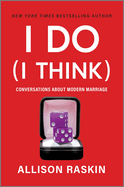
| Publisher: | Hanover Square Press | |
| Genre: | Family & Relationships, Love & Romance, Marriage & Family, Sociology, Women's Studies, Social Science, Marriage & Long Term Relationships | |
| ISBN: | 9781335012517 | |
| Pub Date: | October 2024 | |
| Price: | $28.99 |
| Parenting & Family |
by Allison Raskin
Allison Raskin's second nonfiction book, I Do (I Think), examines the complexities of 21st-century marriage in Western society: shifting gender roles, the rise in cohabitation by unmarried couples, tricky financial questions, even the looming specter of divorce. Mixing personal experience and interviews with experts such as therapists and lawyers, Raskin argues that marriage is still important to modern life. Although its weight in society may be changing, that weight is still considerable.
Engaged twice and married once, Raskin (Overthinking About You) had long viewed marriage as a personal goal. Although she shares anecdotes from her own history, she also explores why certain ideas about marriage have dominated Western narratives about family life, financial security, and love. Modern marriage is increasingly (though not endlessly) adaptable to different couples' wants and needs: Raskin explores creative divisions of household labor, various ways to combine (or not) one's finances with a spouse, and the reasons that, despite commitment phobia and myriad other challenges, people of all stripes still choose to get married. She analyzes the effects of the Covid-19 pandemic on marriage rates, highlights the legal benefits and drawbacks of marriage versus domestic partnership, and unequivocally recommends couples therapy, especially to anxious people like herself. Along the way, she shares insights from people at many different stages of marriage, including those who've married more than once and even a few divorce attorneys who still believe in marriage.
Well researched and thoughtful, Raskin's book provides a wryly humorous perspective on whether and why marriage is still an appealing life choice. --Katie Noah Gibson, blogger at Cakes, Tea and Dreams
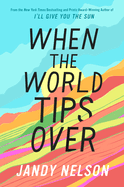
| Publisher: | Dial Books | |
| Genre: | Magical Realism, Family, General, Young Adult Fiction, Siblings, LGBTQ+ | |
| ISBN: | 9780525429098 | |
| Pub Date: | September 2024 | |
| Price: | $21.99 |
| Starred | Children's & Young Adult |
by Jandy Nelson
When the World Tips Over is a multilayered, multigenerational family saga, a sumptuous example of fabulism, and Jandy Nelson's first delicious YA novel since her Printz Award-winning I'll Give You the Sun.
Dizzy, 12, Miles, 17, and Wynton, 19, live with their mother in the idyllic Northern California vineyard town of Paradise Springs. The three children, as Dizzy narrates, were "all named after our missing father's favorite jazz trumpeters, only they're all men and Black and we're white and I'm a girl." Despite their shared roots, "this sibling thing between them [isn't] working out" and Dizzy and Wynton clash constantly with Miles. The dynamic is not surprising, though, given the "Cain and Abel curse" that has been on the Fall family since their great grandfather, Alonso's, time. Then a mysterious rainbow-haired stranger and potential angel/Energy Being/Divine Messenger shows up, and she may just be the catalyst for reversing the curse.
When the World Tips Over is steeped in the mysteries and missteps of the human condition, particularly those in familial relationships. Missing parents, flawed mothers, and always-battling brothers populate the 500-plus captivating pages. Nelson includes a definition for the word "fantasia" at the start, preparing the reader for this "work in which fancy roves unrestricted." Surreal storytelling by various characters includes kissing ghosts, people who float when they're happy, and boys who communicate telepathically with dogs. Nelson's narrative is told from multiple points of view and includes unsent letters, notes, novel excerpts, newspaper articles, family trees, texts, and phone transcripts. When the World Tips Over meanders wildly but purposefully to its complicated, satisfying conclusion. Luscious, start to finish. --Emilie Coulter, freelance writer and editor
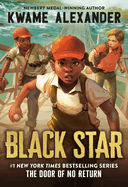
| Publisher: | Little, Brown Books for Young Readers | |
| Genre: | Family, General, Sports & Recreation, Social Themes, Stories in Verse (see also Poetry), Baseball & Softball, African American & Black, Juvenile Fiction, Prejudice & Racism, Multigenerational, Historical | |
| ISBN: | 9780316442596 | |
| Pub Date: | September 2024 | |
| Price: | $17.99 |
| Starred | Children's & Young Adult |
by Kwame Alexander
Newbery Medal-winner Kwame Alexander (The Crossover) weaves together the captivating stories of a Black tween's love of baseball with her grandfather's tales of his homeland in the engrossing and utterly gripping novel-in-verse sequel to The Door of No Return.
Twelve-year-old Charlene (Charley) Cuffey loves baseball. Despite her best friend, Cool Willie Green, reminding her it's almost impossible for a Southern Black girl to play in a segregated country, Charley dreams of becoming "the first girl pitcher to play/ professional." Charley also loves spending time with her grandfather Nana Kofi, who teaches her Twi and encourages her with his own stories of bravery and adventure in his homeland. When Charley challenges a bully in her community to a baseball game at the church picnic, it spills over into the "brand-new, real-deal/ baseball field in Great Bridge," a neighboring white community. A white child is injured, and the repercussions of that child's anger set Charley and Willie's lives aflame.
Kwame Alexander, inspired by events that took place during the Jim Crow era in the segregated U.S. South, delivers a stellar, historically accurate coming-of-age middle-grade novel. Chapters begin with a prose flashback from Nana Kofi, directly connecting Charley to The Door of No Return, then switch into Charley's youthful, rhythmic verse point-of-view. Alexander thoughtfully tackles a violent and heartbreaking time in U.S. history in a way that is approachable for younger middle-grade readers while also relatable and thought-provoking for older kids. Black Star is an outstanding and thorough novel that radiates in every line of text the pride, strength, and determination of African Americans and their African ancestors. --Natasha Harris, freelance reviewer
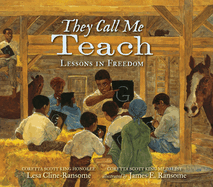
| Publisher: | Candlewick | |
| Genre: | School & Education, United States - Civil War Period (1850-1877), African American & Black, Juvenile Fiction, Historical | |
| ISBN: | 9780763681555 | |
| Pub Date: | September 2024 | |
| Price: | $18.99 |
| Children's & Young Adult |
by Lesa Cline-Ransome, illust. by James E. Ransome
It took profound courage and determination for enslaved people in the 19th-century United States to learn to read. In They Call Me Teach, Coretta Scott King Honoree Lesa Cline-Ransome (Being Clem; Before She Was Harriet) and Coretta Scott King Medalist James E. Ransome (The Bell Rang) honor these individuals through the fictional story of a man who risks his life to teach others to read.
Cline-Ransome's central character is a composite inspired by real stories of those who fought for literacy and freedom. Known by his "secret name," Teach, he learns to read " 'longside Master's son." He is allowed to read only while working in his master's store but secretly instructs others in hidden locations, using a "torn speller." Cline-Ransome's vivid descriptive imagery deepens the narrative: "Crouched low, I teach in whispers with hushed letters and the soft scrape of a stick against slate."
The story unfolds over a week, detailing Teach's covert lessons using sticks in the dirt, a public reading incident that brings warnings from his master, and his help in a woman's escape by writing her "pass" to travel to another plantation: "I write up a receipt for her freedom." The story culminates in a soul-stirring Sunday school service. Illustrator Ransome captures the period's essence with radiant details and a warm amber light, and his unforgettable closing spread at Sunday school, depicting a "time for rest from secrets," is rich with emotion and poignantly reflects the profound impact of Teach's work. --Julie Danielson
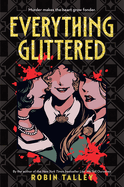
| Publisher: | Little, Brown Books for Young Readers | |
| Genre: | School & Education, Mysteries & Detective Stories, Boarding School & Prep School, General, United States - 20th Century, Girls & Women, Young Adult Fiction, Historical, LGBTQ+ | |
| ISBN: | 9780316565318 | |
| Pub Date: | September 2024 | |
| Price: | $18.99 |
| Children's & Young Adult |
by Robin Talley
There's long been conjecture about the sexual orientations of the three teenage-girl sleuths who anchor the Nancy Drew books, the classic series for mystery-loving tweens and teens. Conversely, Robin Talley's queer young adult thriller Everything Glittered centers on a trio of adolescent girls who are taking risks both romantically and in their detective work.
Set in 1927--peak Prohibition--in Washington, D.C., the novel begins with 17-year-old narrator Gertie Pound and friends Milly and Clara from her all-girls finishing school plotting to visit a speakeasy, a gathering spot full of young women "who care more for adventures than debutante gowns." But first there's drama at the school faculty party: a missing diamond earring, the sound of a gunshot outside, and a figure running down the alley. None of this derails the girls' speakeasy outing, during which Mrs. Rose, their firebrand headmistress, is found dead in her office, surrounded by bottles of booze; her death, according to the newspaper, has been "ruled an accidental poisoning following the illegal consumption of liquor."
As Everything Glittered follows the girls' efforts to unearth the truth about Mrs. Rose's death, the snaky plotting serves up several gasp-making surprises. Talley (Our Own Private Universe; Pulp) may be nodding to Nancy Drew with the book's girl-sleuth trio, hidden indoor spaces, and menace-oozing suspects, but unlike Nancy, Gertie is as focused on her potential love interests-slash-fellow investigators as she is on the case. Her search for justice for Mrs. Rose parallels a search of the more personal sort: for "people like me." --Nell Beram, freelance writer and YA author